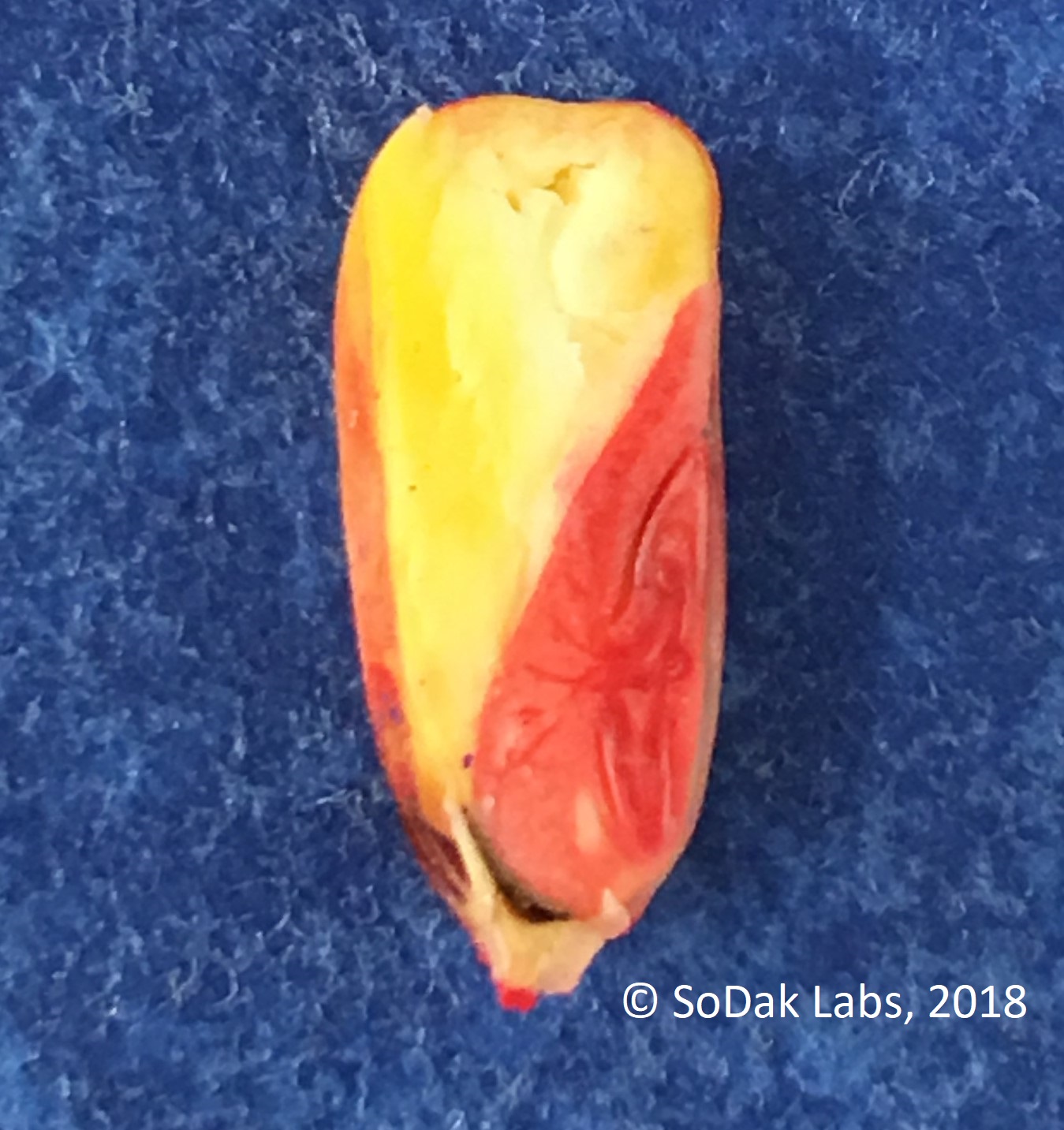Corn Services
- Corn Germination
- Corn Vigor - 40F or 50F Cold
- Corn Vigor - 50F Saturated Cold
- Corn Vigor - Accelerated Aging (AA)
- Corn Herbicide Traits
- Corn Insect Traits
- Corn Adventitious Presence (GMO)
- Corn Genetic Purity
- Corn Purity and Noxious Weed Examination
- Corn Pericarp Damage
- Corn Winter Grow Outs
- Corn Seed Count
- Corn Tetrazolium
- Waxy Corn Testing

Corn kernel showing red staining patterns from Tetrazolium testing
Method
The tetrazolium test is a quick test to estimate potential germination. Seed is imbibed for 16 hours as a precondition stepping to allow easier long-sectioning of seeds and to ramp up respiration and enzyme systems. Seed are long-sectioned using razor blades and the cut surface is exposed to tetrazolium (TZ) chloride salt solution, when respiration is active, the TZ combines with Hydrogen ions to form “formazan” a red insoluble pigment. The topographical staining patterns are evaluated and embryos are categorized as either viable or non-viable. Seeds exposed to freezing conditions, do require drying to below 15% seed moisture content prior to preconditioning to allow enzyme systems to be regenerated due to seed respiration.
What is Reported
A percentage of viable seed (normal staining embryos and any dormant seeds).
Value of Results
Tetrazolium is a quick estimate of germination and can be useful in determining viability of hard seeds. When seed has a fungal colonization, such as Fusarium or Phomopsis spp., the TZ test will best estimate a treated germination test.
Resources & Research
40F Cold Test for Early Planted Corn
Adventitious Presence (AP) Testing of Seed or Grain
Bulk Electrical Conductivity Test
Corn Pericarp Damage & Starter Fertilizers
Maize Hybrid Purity Testing Services
PCR Confirmation of Non-Trait Seeds/Seedlings
Standardizing Corn Terminology
Agronomically Accurate Seed Testing Results
SoDak Lab's goal is to deliver fast, accurate, and diagnostic seed testing services.